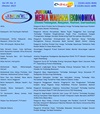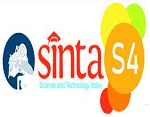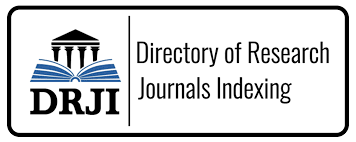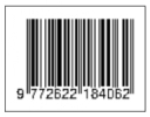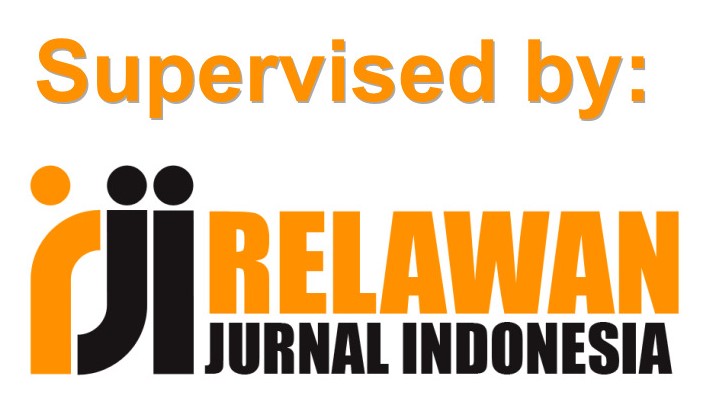Pengaruh Orientasi Pasar Terhadap Kepuasan Konsumen Dengan Inovasi Produk Sebagai Variabel Pemediasi
DOI:
https://doi.org/10.31851/jmwe.v19i3.9475Abstract
ABSTRAK
Â
Tujuan penelitian ini adalah untuk mengidentifikasi dan mengkaji pengaruh orientasi pasar dan inovasi produk terhadap kepuasan konsumen Tea Break di Kota Palu. Metode penelitian yang digunakan adalah deskriptif kausal. Dalam penelitian ini populasi terdiri dari seluruh warga Kota Palu yang pernah membeli Tea Break. Purposive sampling digunakan dalam penelitian ini, dengan jumlah sampel 100 responden. Wawancara, kuesioner, dan observasi digunakan untuk mengumpulkan data. Dalam pekerjaan ini, skala Likert digunakan sebagai skala, dan analisis rute dilakukan menggunakan perangkat lunak Smart PLS versi 3.0 sebagai alat analisis.HasilpenelitianinimenunjukkanbahwabaiksecaralangsungmaupuntidaklangsungorientasipasardaninovasiprodukberpengaruhsignifikanterhadapkepuasankonsumenTea Break diKota Palu.
Â
KataKunci:Orientasipasar,inovasiproduk,kepuasankonsumen
Â
Â
ABSTRACTÂ
The purpose of this research is to identify and assess the impact of market orientation and product innovation on Tea Break consumer satisfaction in Palu City. The research method adopted is causal descriptive. In this study, the population consisted of all Palu City residents who had purchased Tea Break. Purposive sampling was utilized in this investigation, with a total sample of 100 respondents. Interviews, questionnaires, and observation were used to collect data. In this work, a Likert scale was employed as the scale, and route analysis was performed using Smart PLS software version 3.0 as the analytical tool. The results of this study indicate that either directly orindirectly market orientation and product innovation have a significant effect on TeaBreakconsumer satisfaction in Palu City.
Â
Keywords:Marketorientation,productinnovation,customersatisfaction
References
Aydin, H. (2020). Market orientation and product innovation: the mediating role oftechnologicalcapability.EuropeanJournalofInnovationManagement,24(4),1233–1267. https://doi.org/10.1108/EJIM-10-2019-0274
Boso, N., Cadogan, J. W., & Story, V. M. (2013). Entrepreneurial orientation andmarket orientation as drivers of product innovation success: A study of exportersfrom a developingeconomy.International SmallBusinessJournal,31(1),57–81.https://doi.org/10.1177/0266242611400469
Bryan Lukas, & O.C. Ferrell. (2000). The Effect of Market Orientation on ProductInnovation.JournaloftheAcademyofMarketingScience,28(2),239–247.
Buli,B.M.(2017).EntrepreneurialOrientation,MarketOrientationandPerformanceofSMEsintheManufacturingIndustry:EvidencefromEthiopianEnterprises.ManagementResearchReview, 40(3),292–309.https://doi.org/http://dx.doi.org/10.1108/MRR-07-2016-0173
Carbonell,P.,&Escudero,A.I.R.(2010).Theeffectofmarketorientationoninnovationspeedandnewproductperformance.JournalofBusinessandIndustrialMarketing,25(7),501–513.https://doi.org/10.1108/08858621011077736
Casidy,R.(2014).Theroleofperceivedmarketorientationinthehighereducationsector.AustralasianMarketingJournal,22(2), 155–163.https://doi.org/10.1016/j.ausmj.2014.02.001
Castro, C. B., Armario, E. M., & Del RÃo, M. E. S. (2005). Consequences of marketorientation for customers and employees. In European Journal of Marketing (Vol.39,Issues5–6).https://doi.org/10.1108/03090560510590755
Deshpandé,R.,&Farley,J.(1998).MeasuringMarketOrientation:Generalizationand Synthesis.JournalofMarket-FocusedManagement,2(3),213–232.https://doi.org/10.1023/A:1009719615327
Fatonah,S.,&Haryanto,A.T.(2022).Exploringmarketorientation,productinnovationandcompetitiveadvantagetoenhancetheperformanceofsmesunderuncertainevents.UncertainSupplyChainManagement,10(1),161–168.https://doi.org/10.5267/j.uscm.2021.9.011
Hair, J. F., Sarstedt, M., Ringle, C. M., & Mena, J. A. (2012). An assessment of theuse of partial least squares structural equation modeling in marketing research.JournaloftheAcademyofMarketingScience,40(3),414–433.https://doi.org/10.1007/s11747-011-0261-6
Hassen, Y., & Singh, A. (2020). The Effect of Market Orientation On The PerformanceofSmall andMediumEnterprisesinCaseofAmharaRegion,Ethiopia.JournalofNewBusinessVentures,1(1–2),1–18.https://doi.org/10.1177/2632962x20961051
Hong, J., Song, T. H., & Yoo, S. (2013). Paths to success: How do market orientationandentrepreneurshiporientationproducenewproductsuccess.JournalofProductInnovationManagement, 30(1), 44–55. https://doi.org/10.1111/j.1540-5885.2012.00985.x
Jaworski,B.J.,&Kohli,A.K.(1996).Marketorientation:Review,Refinement,andRoadmap.JournalofMarket-FocusedManagement,1(2),119–135.https://doi.org/10.1007/bf00128686
Jeong,S.W.,Chung,J.E.,&Roh,J.S.(2019).ImpactofExternalKnowledgeInflowonProductandProcessInnovationofKoreanSMEs:AbsorptiveCapacityasaMediator.ClothingandTextilesResearchJournal,37(4),219–234.https://doi.org/10.1177/0887302X19860913
Kusnandar,V.B.(2022).IndustriMakanandanMinumanNasionalMulaiBangkitdariPandemi Covid-19. Katadata.Co.Id.https://databoks.katadata.co.id/datapublish/2022/03/31/industri-makanan-dan-minuman-nasional-mulai-bangkit-dari-pandemi-covid-19
Laforet,S.(2008).Size,strategic,andmarketorientationaffectsoninnovation.JournalofBusinessResearch,61(7),753–764.https://doi.org/10.1016/j.jbusres.2007.08.002
Larsen, P., & Lewis, A. (2007). How Award Winning SMEs Manage The Barriers toInnovation. JournalCreativityandInnovationManage-Ment,16(2),142–151.
Mahmoud, M. A., Blankson, C., Owusu-Frimpong, N., Nwankwo, S., & Trang, T. P.(2016). Market orientation, learning orientation and business performance: Themediating role of innovation. International Journal of Bank Marketing, 34(5), 623–648.https://doi.org/10.1108/IJBM-04-2015-0057
Mahmoud,M.A.,Hinson,R.E.,&Duut,D.M.(2019).Marketorientationandcustomersatisfaction:Theroleofservicequalityandinnovation.InternationalJournal ofBusiness andEmergingMarkets, 11(2), 144–167.https://doi.org/10.1504/IJBEM.2019.100717
Na, Y. K., Kang, S., & Jeong, H. Y. (2019). The effect of market orientation onperformanceofsharingeconomybusiness:Focusingonmarketinginnovationandsustainablecompetitiveadvantage. Sustainability (Switzerland), 11(3).https://doi.org/10.3390/su11030729
Nakos, G., Dimitratos, P., & Elbanna, S. (2019). The mediating role of alliances in theinternational market orientation-performance relationship of smes. InternationalBusinessReview,28(3),603–612.https://doi.org/10.1016/j.ibusrev.2018.12.005
Naveed, T., Akhtar, I., & Cheema, K. U. R. (2012). Munich Personal RePEc ArchiveTheImpactofInnovationonCustomerSatisfactionandBrandloyalty :AStudyoftheStudentsofFaisalabadNaveed,TahirandAkhtar,IrumandCheema,KhaliqUr. Mpra,53197, 1–10.https://mpra.ub.uni-muenchen.de/53197/
Nemati, A. R., Khan, K., & Iftikhar, M. (2010). Impact of innovation on customersatisfactionandbrandloyalty,astudyofmobilephonesusersinPakistan.EuropeanJournal ofSocial Sciences,16(2),307–314.
Oh, H., & Kim, K. (2017). Customer satisfaction, service quality, and customer value:years2000-2015.InternationalJournalofContemporaryHospitalityManagement,29(1),2–29.https://doi.org/10.1108/IJCHM-10-2015-0594
Pan,Y.,&Zinkhan,G.M.(2006).Exploringtheimpactofonlineprivacydisclosuresonconsumertrust. Journal of Retailing.https://www.sciencedirect.com/science/article/pii/S0022435906000558
Putka,D.,&Sackett,P.R.(2010).RealiabilityandValidity.HandbookofEmployeeSelection, 9–49.
Singh,S.,&Ranchhod,A.(2004).Marketorientationandcustomersatisfaction:Evidence from British machine tool industry. Industrial Marketing Management,33(2),135–144.https://doi.org/10.1016/S0019-8501(03)00056-7
Singh,S.,&Saluja,D.(2013).CustomerSatisfactionStudyofBaristaCoffee.European Journal of Commerce and Management Research(EJCMR), 2(6), 118–122.
Slater, S. F., & Narver, J. C. (2000). The Positive Effect of a Market Orientation onBusiness Profitability: A Balanced Replication. Journal of Business Research,48(1),69–73.https://doi.org/10.1016/S0148-2963(98)00077-0
Zhang,J.,&Duan,Y.(2010).EmpiricalstudyontheimpactofmarketorientationandinnovationorientationonnewproductperformanceofChinesemanufacturers.Nankai BusinessReviewInternational, 1(2), 214–231.https://doi.org/10.1108/20408741011052609
Downloads
Published
Issue
Section
License
The copyright of the received article shall be assigned to the publisher of the journal licensed under a Creative Commons Attribution-NonCommercial 4.0 International License in line with the license, authors and any users (readers and other researchers) are allowed to share and adapt the material only for non-commercial purposes. In addition, the material must be given appropriate credit, provided with a link to the license, and indicated if changes were made. If authors remix, transform or build upon the material, authors must distribute their contributions under the same license as the original.

